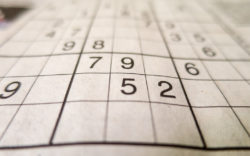[The Warren] Commission prejudged Oswald guilty and made use of only circumstantial evidence to bolster its assumption, while suppressing information that tended to undermine it.– author Howard Roffman (1976)
The Warren Commission Report on the assassination of President Kennedy … was instantly implausible… because the authors hid the secrets they knew (and ignored the ones they didn’t).–journalist David Ignatius (2004)
It is now commonplace that, at least as to its key conclusions, the Warren Report cannot be trusted. The Warren Report is the Warren Commission’s account of the assassination of President John F. Kennedy, who was shot dead in broad daylight while motorcading in an open limousine on Elm Street in downtown Dealey Plaza in Dallas, TX, on Friday, Nov. 22, 1963. The Report was released to the public precisely 50 years ago, on Sept. 27, 1964.
In the half-century since the Report, a vast mass of additional evidence and new information relating to the assassination has emerged. There have been reinvestigations by Congress. Hundreds of thousands of pages of government documents have been declassified. Responsible private researchers, including academic scholars from major universities, have undertaken their own studies and published authoritative books and articles calling into question the accuracy of the Warren Report. The strange, listless behavior of the Warren Commission itself has been amply documented.
We must, after 50 years, face the hair-raising, inescapable truth: The critics who warned us about the Warren Report were right all along. The Report was a sham which duped the American public while pretending to be based on a full, no-holds-barred inquiry. It was the fruits of an inadequate, hurried investigation by officials who from the beginning had already made up their minds that Oswald was the assassin and that he had acted alone. To get a grasp of how enormously unreliable the Warren Report is, one need only look at the Report’s three most important conclusions.
(1) All the shots fired at the president’s limousine were fired by 24-year old Lee Harvey Oswald from the sixth floor of the Texas School Book Depository.
(2) Oswald fired a total of three shots in less than six seconds, using a bolt-action military surplus 6.5 mm (.255 cal.) Italian carbine, manufactured before 1941, which was found concealed behind some boxes on the sixth floor within minutes of the murder.
(3) Oswald acted alone, and there was no conspiracy—foreign or domestic.
These conclusions have not survived the test of time.
First, today the weight of the evidence is that shots (probably diversionary shots, since the assassination was a military-style ambush) were indeed fired from the sixth floor Depository window, but that additional shots were also fired from other locations, behind or in front, or to the right side, of JFK’s limousine. Furthermore, the weight of the evidence is against Oswald’s having fired any of the shots that struck JFK. In fact, based on what we know now, the weight of the evidence is that Oswald did not fire any shots at all and that he was not even on the sixth floor when JFK was murdered. The so-called evidence (including the ballistics evidence) the Report relied on to accuse Oswald of singlehandedly carrying out the assassination from the sixth floor was most likely fabricated, planted or misleading.
Second, the weight of evidence makes it extremely unlikely that Oswald could have used the sixth-floor carbine to assassinate JFK. It was an old, flimsy, second-hand, medium-velocity weapon. It fired ammunition manufactured before 1945. It had an unusual two-stage trigger. The bolt was difficult to operate. The firing pin was worn, and there was rust on it and its spring. The weapon’s cheap scope was defective, causing shots to miss the target.
Moreover, at the time of the assassination the presidential limousine was traveling away from, at an angle to, and downhill from the sixth-floor window. The fatal headshot depicted on Frame 313 of the Zapruder film occurred when the non-stationary car was 88 yards (264 feet) from the window, with the president visible only from the waist upward. Oswald was not a reincarnation of Robin Hood, William Tell, and Annie Oakley. Expert marksmen—master riflemen whose shooting skills far exceeded Oswald’s—retained by the Warren Commission to duplicate Oswald’s alleged feat were unable to do so, even though they were allowed as much time as they wanted before firing their first shot, even though they fired from a tower half the height of the sixth floor at stationary rather than moving targets, and even though in various other ways the shooting tests were performed under conditions superior to the conditions prevailing on Nov. 22, 1963.
The weight of the evidence, therefore, is that Lee Harvey Oswald did not use the sixth-floor carbine to shoot JFK. (Violently arrested shortly after the assassination, Oswald repeatedly denied guilt. He never had a chance to defend himself in court, however, because two days after the assassination he was murdered while a handcuffed prisoner in police custody in a police station in the presence of 70 police officers.)
Third, and finally, the weight of the evidence at present is that a domestic conspiracy was behind the assassination, but that Oswald was not one of the conspirators. He was the patsy. The identities of the conspirators remain unknown. There is at least a good possibility the conspiracy consisted of an ad-hoc grouping of racist and right-wing extremists, ice-cold Mafia gangsters, deranged anti-Castro Cubans, some U.S. military intelligence operatives and certain persons with connections to the CIA. The actual shooters who fired at JFK doubtless were themselves promptly rubbed out.
After 50 years the Warren Report—at least in its most important conclusions—stands discredited. It now appears that, contrary to the Report, there was a conspiracy, and, also contrary to the Report, that Lee Harvey Oswald was not an assassin (or a conspirator). The Report did not solve the JFK assassination; instead, it bamboozled trusting Americans. No wonder that, in the words of journalist David Talbot, the Report has become “a notorious symbol of official coverup.”
Donald E. Wilkes, Jr. is a professor emeritus at UGA, where he taught in the law school for 40 years. This is his 36th published article on the JFK assassination.
His speech, “The JFK Assassination 50 Years Later,” delivered at the ACC Library last Nov. 21, is available at youtube.com/watch?v=vcAy2-3sfgg.
Like what you just read? Support Flagpole by making a donation today. Every dollar you give helps fund our ongoing mission to provide Athens with quality, independent journalism.











